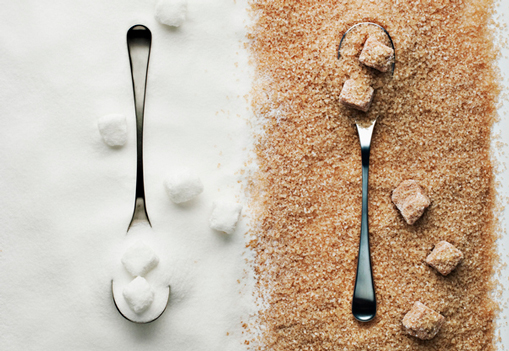The Comprehensive Trip of Sugar Cane: Understanding Supplies and Production Techniques
The journey of sugar cane is a complex procedure that begins in exotic regions with ideal growing problems. Cultivation methods are made to optimize yield and sustainability. Collecting approaches range from typical hands-on methods to modern mechanical techniques. After harvest, sugar walking stick undergoes different handling phases to transform it into granulated sugar. This exploration exposes not just the details of production yet also the more comprehensive implications for global markets and the setting. What exists yet preliminary transformation?

The Background of Sugar Cane Growing
Sugar walking stick growing dates back thousands of years, its origins can be traced to the tropical areas of Southeast Asia, where very early farmers first identified the plant's sweet sap. This exploration resulted in the growing of sugar walking cane as a staple plant, progressively infecting India and the Middle East. By the initial millennium AD, sugar walking stick was being grown in these regions, where techniques for extracting and refining sugar were developed.The plant obtained importance in Europe throughout the Campaigns, as returning soldiers brought understanding of sugar production back home. By the 15th century, the facility of sugar haciendas started in the Caribbean, driven by the demand for sugar in Europe. The transatlantic slave labor sustained this development, as oppressed labor was utilized to take full advantage of production. Over centuries, sugar cane farming advanced, influencing economic climates and cultures worldwide, making it a considerable farming asset.
Expanding Conditions and Agricultural Practices
The successful farming of sugar cane relies greatly on details growing problems and farming techniques. Perfect temperatures vary between 20 to 32 levels Celsius, with well-distributed rainfall of 1,500 to 2,500 millimeters yearly. Dirt quality is necessary; loamy or sandy dirts, rich in raw material, advertise healthy and balanced growth.Farmers commonly use different farming methods to enhance yield. Plant turning and intercropping are common methods to maintain dirt fertility and control insects. Normal irrigation may be necessary in drier areas, making certain that the plants receive appropriate moisture. Fertilizing, specifically with nitrogen and potassium, is essential for durable growth.Pest and weed management approaches, consisting of integrated parasite administration (IPM), aid to lessen losses. Lasting techniques, such as marginal husbandry and natural farming, are acquiring traction among producers to protect the environment. Collectively, these elements add considerably to the successful production of sugar walking stick.
Harvesting Methods and Timing
In sugar cane production, the selection between guidebook and mechanical harvesting substantially impacts effectiveness and yield. Timing is also essential, as harvesting at the optimal moment assurances maximum sugar web content and decreases losses. Recognizing these factors is vital for effective sugar walking cane growing.
Handbook vs. Mechanical Harvesting
Harvesting sugar cane entails two main techniques: guidebook and mechanical, each with distinctive advantages and challenges. Hand-operated harvesting, traditionally carried out by laborers making use of machetes, allows for better precision in reducing and lowers damages to the plant. It is usually favored in regions with uneven surface or where the plant is sprinkled with other plants, as workers can browse these intricacies better. It is labor-intensive and lengthy. Conversely, mechanical harvesting uses specialized makers to cut and accumulate the walking stick swiftly, increasing efficiency and reducing labor prices. This approach is fit for massive procedures yet can lead to higher crop damages and dirt compaction. Eventually, the selection between guidebook and mechanical harvesting relies on numerous elements, including financial factors to consider and ecological conditions.
Optimal Harvesting Timing
Picking the appropriate minute to harvest sugar walking stick greatly impacts both yield and quality. Ideal gathering normally happens when the walking stick gets to full maturation, normally in between 12 to 18 months after growing. At this stage, sucrose degrees top, ensuring the very best sugar extraction rates. Weather additionally play a vital role; collecting throughout completely dry durations can protect against damage to the walking stick and decrease dirt compaction. In addition, checking the plant's color and fallen leave decline can suggest readiness, as a yellowing of the fallen leaves recommends that the walking cane is ripe. Timely harvesting is important, as delays can cause lowered sugar material and raised sensitivity to pests and illness, eventually influencing total production performance.
Handling Methods: From Cane to Sugar
The processing of sugar cane entails vital extraction methods that separate the juice from the coarse plant material. Adhering to removal, the refining process transforms the raw juice right into taken shape sugar, guaranteeing purity and quality. Understanding these approaches is crucial for comprehending the trip of sugar from walking stick to final product.
Extraction Strategies Summary
Removal strategies play a substantial function in changing sugar walking stick into useful sugar. The cane is harvested and delivered to refining centers where it undergoes thorough washing to remove impurities - sugar cane products. The next action entails squashing the walking stick making use of hefty rollers, which launches the juice having sucrose. This juice is then clarified via the addition of lime and warmth, permitting impurities to resolve out. After clarification, the juice is evaporated under regulated temperature levels to focus the sugar content. Ultimately, condensation takes place, where sugar crystals are formed as the concentrated juice cools. These strategies guarantee the reliable removal of sugar while keeping the high quality needed for additional processing. Recognizing these approaches is necessary for understanding the overall production of sugar from sugar walking stick
Refining Process Explained
Refining sugar from the drawn out juice is a vital step that improves its pureness and quality. This process involves a number of phases, beginning with information. The juice is warmed and treated with lime and other representatives to remove impurities, resulting in a more clear fluid. Next off, the made clear juice undergoes evaporation, where water is gotten rid of to focus the sugar web content. The focused syrup is after that taken shape by cooling, allowing sugar crystals to develop. These crystals are divided from the remaining syrup, called molasses, via centrifugation. Lastly, the raw sugar is further fine-tuned with washing, filtration, and drying out, which gets rid of any type of continuing to be pollutants. Completion item is the granulated sugar typically made use of in homes and markets worldwide, making certain uniformity and sweetness.
Sustainable Practices in Sugar Cane Production
Although sugar walking stick production has traditionally depended on intensive farming techniques, there is an expanding focus on lasting techniques that promote environmental wellness and economic viability. Farmers are progressively embracing techniques such as plant turning, which enhances soil fertility and decreases insect problems. Integrated bug monitoring (IPM) is likewise gaining grip, permitting for all-natural killers to regulate pest populaces, consequently minimizing chemical pesticide use.In enhancement, innovations in watering approaches, such as drip watering, are being used to conserve water resources. Lasting land administration techniques, including minimized tillage, assistance prevent dirt disintegration and preserve biodiversity. Many manufacturers are checking out natural farming methods, which eschew artificial fertilizers and chemicals altogether, promoting a much healthier ecological community.
The International Sugar Market and Economic Influence
Lasting methods in sugar cane production not only benefit the setting yet likewise influence the characteristics of the global sugar market. As customer need shifts towards ethically produced items, nations adopting sustainable methods obtain competitive advantages. This pattern prompts significant sugar exporters, such as Brazil and India, to integrate environment-friendly page practices, consequently influencing worldwide prices and supply chains.Moreover, variations in production because of climate modification and environmental regulations can create volatility in sugar rates, affecting economic climates reliant on sugar exports. Areas that spend in sustainable farming might experience boosted return stability, leading to better market positioning.Economic influences extend past private countries, as global trade agreements and tolls shape the competitive landscape. Eventually, the interplay between lasting methods and market characteristics underscores the importance of flexible approaches in a swiftly changing financial setting, influencing both manufacturers and customers in the international sugar market.
Innovations in Sugar Cane Usage and By-products

As the demand for renewable resources grows, developments in sugar cane utilization and by-products are changing the agricultural landscape. Scientists and business owners are discovering unique applications that prolong beyond conventional sugar production. One considerable development is the conversion of bagasse, the fibrous deposit left after juice extraction, into bioenergy and bioplastics (sugar cane products). This not only reduces waste but additionally supplies lasting energy alternatives for handling facilities.In addition, innovations in fermentation innovation have actually led to the production of biofuels, such as ethanol, from sugar walking stick, which contributes to cleaner power options. Additionally, the removal of molasses has opened up opportunities for producing value-added items like pet feed and specialized spirits.These technologies not just improve the financial feasibility of sugar walking stick growing however also promote environmental sustainability, making sugar walking stick a crucial plant in the change towards a round economy. The ongoing expedition of its you can look here prospective remains to generate promising outcomes
Frequently Asked Concerns
What Are the Wellness Consequences of Consuming Sugar Cane Products?
The wellness effects of consuming sugar walking stick items can differ. While they provide power and essential nutrients, extreme intake may bring about weight gain, boosted blood glucose degrees, and a higher danger of dental concerns. Small amounts is key.
Just How Does Climate Modification Influence Sugar Cane Production?
Environment adjustment considerably impacts sugar walking cane production by modifying rainfall patterns and enhancing temperature website link levels. These modifications can cause decreased yields, boosted insect pressures, and obstacles in keeping dirt health, inevitably impacting both high quality and amount of harvests.
What Is the Duty of Sugar Cane in Biofuel Production?
The role of sugar cane in biofuel production is significant; it acts as a renewable power resource, converting sugars right into ethanol. This procedure lowers reliance on fossil gas and helps reduce greenhouse gas exhausts, promoting environmental sustainability.

Exist Any Alternate Sugar Originated From Sugar Cane?
Alternative sugar stemmed from sugar walking cane consist of molasses and cane sugar itself. These items supply sweetening alternatives while keeping some dietary benefits, making them popular choices for consumers seeking natural choices to synthetic sugar.
Just How Does Sugar Cane Farming Affect Local Communities?
Sugar walking stick farming considerably influences local communities by providing job opportunity, increasing regional economic climates, and affecting social structures. It can additionally lead to environmental problems and health problems, necessitating a balanced technique to lasting techniques - sugar cane products.
 Kel Mitchell Then & Now!
Kel Mitchell Then & Now! Ashley Johnson Then & Now!
Ashley Johnson Then & Now! Keshia Knight Pulliam Then & Now!
Keshia Knight Pulliam Then & Now! Melissa Sue Anderson Then & Now!
Melissa Sue Anderson Then & Now! Catherine Bach Then & Now!
Catherine Bach Then & Now!